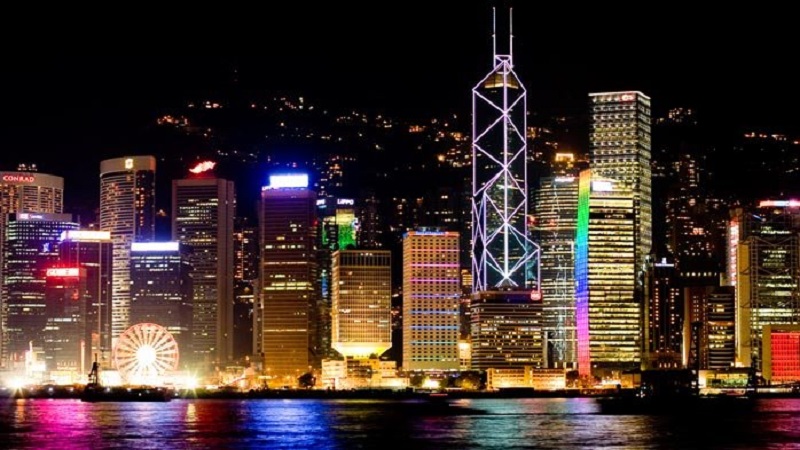What China's Middle Class Means for Australia
March 10 2016

Australia’s ‘China Resources boom’ may have peaked but 57 cents in every dollar increase in Australian exports between 2009-10 and 2014-15 still came from China. [1]
If managed well, Australia’s ‘China dining and services boom’ could run for decades.
1. In 2015 China’s middle class numbered 109 million. This was 17 million more than in the US. [2]
2. Between 2009 and 2030 China’s middle class is projected to grow by more than 850 million.[3]
3. In 2014-15 Australia’s agricultural exports to China stood at $9.0 billion. That was up from $3.7 billion in 2009-2010 and 72 percent more than to the US, our second largest customer.[4]
4. In 2014-2015 Australia’s services exports to China stood at $8.8 billion. This was up from $5.5 billion in 2009-2010 and 24 percent more than to the US, our second largest customer.[5]
5. In 2015 more than one million Chinese tourists visited Australia spending $7.7 billion, up from $3.3 billion in 2010 and more than double that of UK visitors in second place.[6] By 2020 Chinese tourist spending is forecast to reach $13 billion and account for 44 percent of the growth in total tourist spending to 2024-25.[7]
6. China’s middle class is no longer confined to the tier-one metropolises of Beijing, Shanghai, Guangzhou and Shenzhen. By 2022 84 percent of the middle class is expected to live outside these cities.[8]
7. In 2011 the only direct flights to Australia were from Beijing, Shanghai, Guangzhou and Shenzhen. Now there are direct flights from 11 Chinese cities, including inland centres such as Chengdu, Chongqing, Wuhan and Xian.
8. In 2015 there were 170,212 enrolments by Chinese students at Australian educational institutions, 2.4 times the number of students from India in second place.[9] In 2013-14 the number of Australian student visa applications lodged from China’s traditionally less wealthy inland provinces was 12,345, up 30 percent from a year earlier. Those from coastal provinces stood at 23,805, up 24.6 percent.[10] [11]
This fact sheet was prepared by Professor James Laurenceson, Deputy Director, Australia-China Relations Institute, University of Technology Sydney.
Sources
[1] DFAT, 2015, ‘Australia’s direction of goods and services trade-calendar year’, <http://dfat.gov.au/trade/resources/trade-statistics/Documents/australias...
[2] Credit Suisse, 2015, ‘Global Wealth Report 2015’, <https://publications.credit-suisse.com/tasks/render/file/?fileID=F242541...
[3] Homi Kharas and Geoffrey Gertz, 2010, ‘The new global middle class: A cross-over from east to west’, <http://www.brookings.edu/~/media/research/files/papers/2010/3/china-midd...
[4] Department of Agriculture and Water Resources, 2015, ‘Agricultural Commodities Statistics 2015’,<http://www.agriculture.gov.au/abares/publications/display?url=http://143...
[5] DFAT, 2015, ‘Australia’s direction of goods and services trade-calendar year’, <http://dfat.gov.au/trade/resources/trade-statistics/Documents/australias...
[6] Tourism Research Australia, 2015, ‘International Visitors in Australia’, <http://www.tra.gov.au/documents/ivs/International_Visitors_In_Australia_...
[7] Tourism Australia, 2015, ‘Tourism Forecast 2015’, <http://www.tra.gov.au/research/Tourism-Forecasts-2015.html>
[8] Mckinsey & Co, 2013, ‘Mapping China’s middle class’, < http://www.mckinsey.com/industries/retail/our-insights/mapping-chinas-mi...
[9] Department of Education and training, 2015, End of year summary of international student enrolment data,<https://internationaleducation.gov.au/research/International-Student-Dat...
[10] See James Laurenceson & Christopher O’Donnell, 2014, ‘New estimates and a decomposition of provincial productivity changes in China’, China Economics Review, Volume 30, p.93.
[11] Australian Trade Commission, 2015,‘Analysis of offshore student visa applications by citizens of People’s Republic of China Years 2009-2010 to 2013-2014’.
